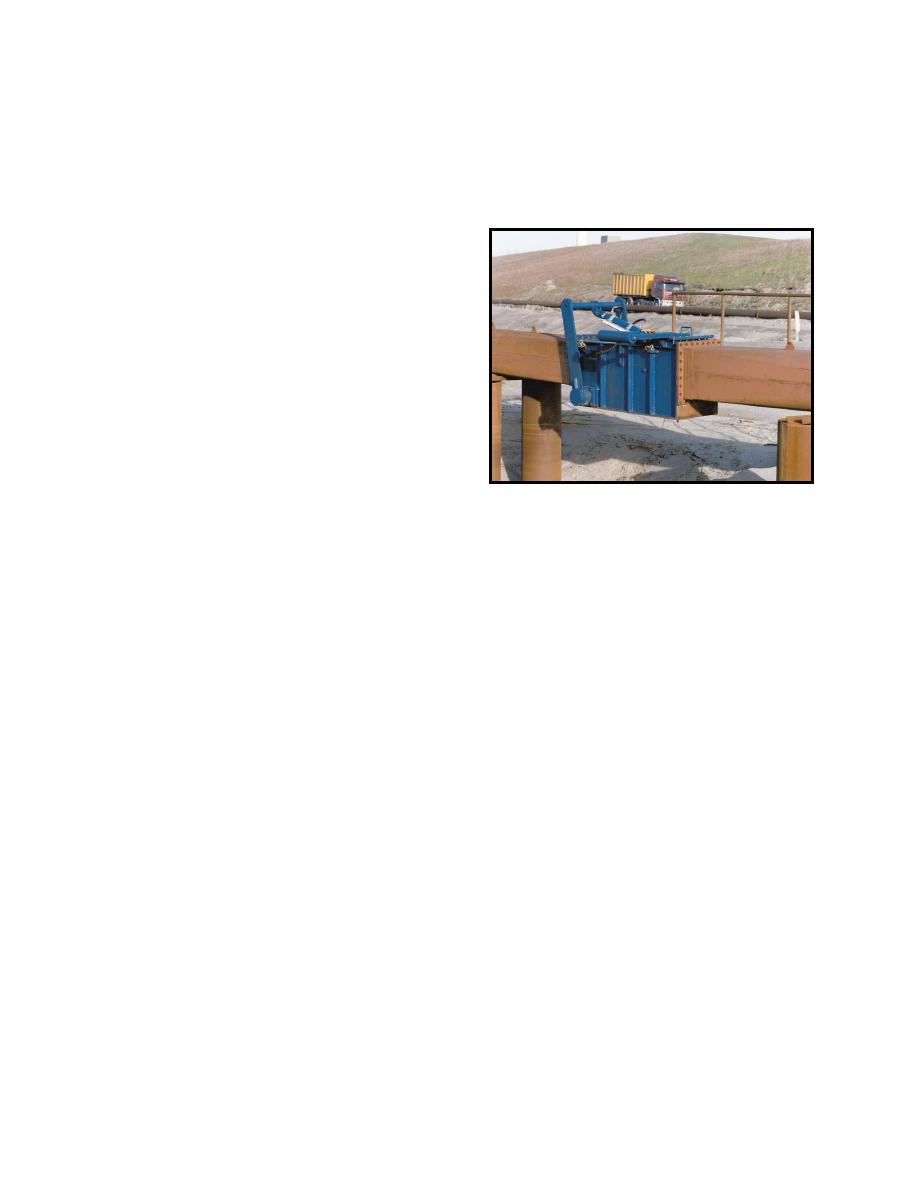 |
||
|
|
||
| |||||||||||||||
|
|
 from contaminated silts on a routine basis. De Slufter managers have con-
tinuously looked for innovative approaches to sand reclamation. They are
currently investigating several different methods including a silting basin
and hydrocyclones. A sand separation basin is employed that is sized for
the velocity and quantity of material coming into the site. A small, con-
fined area at the De Slufter site expands in the direction of flow to allow
settling time for sand so that fine-
grained materials remain in turbulent
suspension and are allowed to flow into
De Slufter. The sand basin is
periodically emptied and the sand is
used for industrial purposes.
Hydrocyclones have also been em-
ployed to separate sand from fine-
grained materials at De Slufter.
According to the managers, hydrocy-
clones represent 80 percent of the cost
while supplying 20 percent of the sand;
the sand separation basin represents 20
percent of the cost, while
supplying 80 percent of the sand separa-
Figure 11. Sand peeler (Port of Rotterdam
tion. Operators at De Slufter are cur-
1999, used by permission)
rently experimenting with a device
called a "sand peeler." The sand peeler is a rectangular section of dis-
charge pipe with a flap in the bottom section (Figure 11). The peeler is de-
signed to make use of the natural zone separation that occurs within the
pipe to separate the flows. The flap is adjustable to account for different
flow regimes and sediment characteristics. The flap is intended to sepa-
rate the flow into two streams and, if successful, will allow for in-pipe
separation of sand and silt fractions. At the time of this investigation
(July 1998) experimentation had not begun.
Potential applications
Sand separation can be conducted as described above. All methods
listed are for reduction of contaminated materials and are not intended for
sand production. Sand has value as a by-product, but not enough value to
overcome the costs associated with separation and dewatering. Real-time,
in-pipe separation of dredged materials was not observed. The sand
peeler may prove effective in separating flow regimes; results of this
study should be available within a year. For locations with a large area
capable of relocating sand, the sand basin may save space in the disposal
area and provide recoverable sand reserves.
22
Chapter 4
Detailed Evaluations
|
|
Privacy Statement - Press Release - Copyright Information. - Contact Us - Support Integrated Publishing |